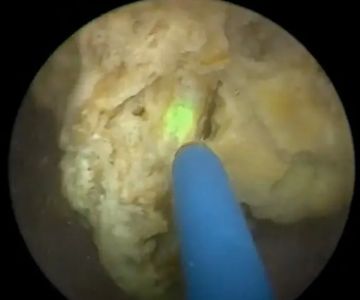Keeping Your Pet's Eyes Healthy: Expert Tips and Essential Care
As a pet owner, one of the most important responsibilities you have is ensuring your furry friend’s health and well-being. When it comes to your pet’s eyes, maintaining proper care is crucial for preventing long-term issues and ensuring they can enjoy their surroundings to the fullest. Pet eye health is something often overlooked, but it is just as important as any other aspect of their overall health. In this guide, I’ll share practical tips and tricks to help you maintain your pet’s eye health and avoid common eye problems that can affect both dogs and cats.
1. Regular Eye Check-ups: Why Routine Inspections Matter
As someone who has always been deeply invested in my pets’ health, I can tell you that regular vet check-ups are key to spotting potential eye issues early. During these visits, your veterinarian will examine your pet's eyes for any signs of infection, dryness, cloudiness, or other abnormalities. Early detection can make all the difference in preventing long-term damage and providing timely treatment. Depending on the breed and age of your pet, your vet might recommend more frequent eye check-ups. For instance, breeds with prominent eyes like Bulldogs or Pugs are more prone to developing eye issues, so extra care is needed.

VCA Arboretum View Animal Hospital, 2551 Warrenville Rd, Downers Grove, IL 60515, USA
See Details2. Understanding the Common Eye Problems in Pets
Like us, pets can suffer from various eye problems. Some of the most common issues I’ve come across in my own pets include:
- Conjunctivitis: This is an inflammation of the eye’s conjunctiva, usually caused by infections or allergies. Symptoms include redness, discharge, and squinting.
- Cataracts: Pets, particularly older dogs, are susceptible to cataracts, which cause the eye lens to become cloudy, impairing vision.
- Dry Eye: This occurs when your pet's eye doesn’t produce enough tears to keep it moist, leading to discomfort, redness, and possible infection.
- Corneal Ulcers: An injury to the surface of the eye, leading to painful sores or abrasions.
- Glaucoma: A serious condition where pressure builds up within the eye, potentially leading to vision loss if untreated.
By familiarizing yourself with these common conditions, you can keep an eye out for any unusual signs in your pet and address them promptly. Trust me, the earlier you catch an issue, the easier it is to manage or treat!
3. Keeping Your Pet’s Eyes Clean and Clear
Just like we clean our faces, it’s important to keep your pet’s eyes free from debris and buildup. I’ve learned that gently wiping your pet’s eyes with a soft, damp cloth or a pet-safe eye wipe can prevent any dirt or discharge from accumulating. For dogs and cats with tear stains, particularly lighter-colored pets, this becomes even more important. Be sure to follow a consistent cleaning routine, especially around the inner corners of the eyes, to avoid any irritation or infections.
4. Watch Out for Allergies
Environmental allergies are a leading cause of eye discomfort in pets. I’ve noticed that my pets often suffer from watery eyes, redness, and squinting during allergy seasons. These symptoms can be exacerbated by pollen, dust, and even certain cleaning chemicals. If your pet’s eyes appear irritated after exposure to certain environments, it might be time to consult your vet about potential allergens. They may recommend medication or other remedies to relieve your pet’s discomfort. I’ve found that keeping my home clean and using air purifiers has helped reduce the impact of allergens on my pets’ eyes.
5. Proper Nutrition for Healthy Eyes
Believe it or not, a balanced diet plays a significant role in maintaining healthy eyes for your pet. Nutrients like Vitamin A, beta-carotene, and omega-3 fatty acids are essential for promoting eye health. Over the years, I’ve found that providing my pets with high-quality food enriched with these nutrients has made a noticeable difference in the overall health of their eyes. If you're unsure whether your pet’s food contains adequate amounts of these nutrients, consult your vet for advice on supplements or better diet choices.
6. Protecting Your Pet’s Eyes from Injury
Injuries to your pet’s eyes can occur during play, especially with active pets. Over the years, I’ve made it a habit to supervise my pets when they’re playing with toys or engaging in outdoor activities. Pet-proofing your home and garden can also prevent eye injuries. For example, removing sharp objects or keeping your pet away from areas with thorny plants can reduce the risk of an eye injury. It’s also important to be cautious when using cleaning products or pesticides around your home, as certain chemicals can irritate or damage your pet’s eyes.
7. Know the Signs of an Eye Emergency
Occasionally, despite our best efforts, emergencies arise. In these moments, it’s important to act quickly. If your pet shows signs of intense pain, such as excessive tearing, squinting, or pawing at their eyes, it might be a sign of a serious condition such as a corneal ulcer or injury. If your pet’s eye looks cloudy, dilated, or red, or if there’s visible discharge, it’s crucial to get them to the vet as soon as possible. I always keep a first-aid kit for my pets handy, and I highly recommend the same for other pet owners. Having emergency contact numbers for your vet and an after-hours clinic readily available can save valuable time in these situations.
8. Conclusion: Stay Vigilant and Proactive
Maintaining your pet’s eye health is an ongoing process that requires consistent attention and care. By following these tips, you can minimize the risk of eye problems and help your pet live a comfortable, healthy life. I’ve personally seen the benefits of taking proactive steps, such as regular vet check-ups, proper nutrition, and keeping my pets’ eyes clean. The more we care for our pets’ eyes, the better their quality of life will be!










